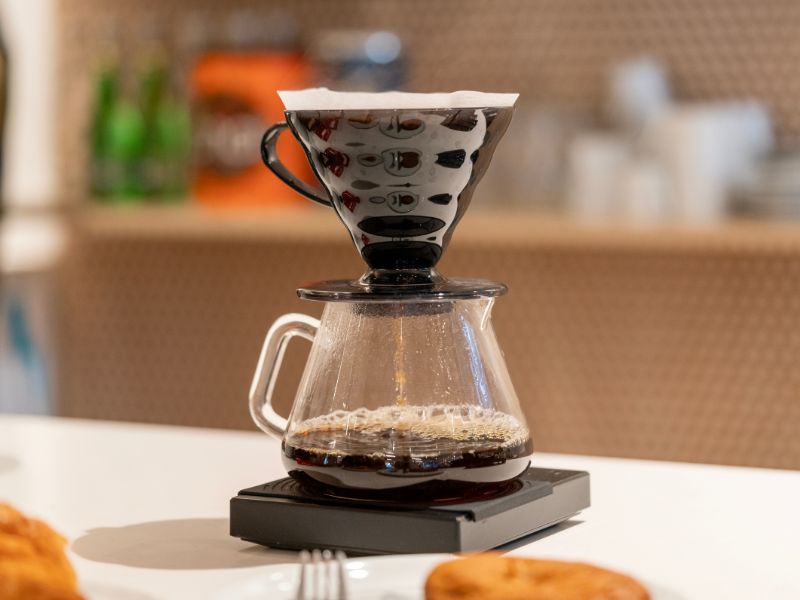For many, starting the day with coffee is an essential ritual. A well-brewed cup’s aroma, flavor, and energizing effect can set the tone of your entire day. But what does it take to create the perfect cup of coffee?
Several factors come into play, from selecting the right beans to mastering the brewing process. This article will explore the key elements contributing to making the perfect cup of coffee.

Quality Beans
The pillar of a great cup of coffee lies in using high-quality coffee beans. Various coffee bean types are available, each with its unique flavor profile and characteristics. Two of the most popular types are Arabica and Robusta. Arabica beans have a delicate flavor, nuanced aroma, and lower caffeine content. Conversely, robusta beans have a more pungent taste and higher caffeine content and are often used in blends or for espresso shots.
When purchasing coffee beans, opt for freshly roasted beans. Check the roast date on the packaging and choose beans that have been roasted within the past two weeks for the best flavor. Or, consider buying whole beans and grinding them just before brewing. This helps to preserve the freshness and ensures a more flavorful cup of coffee.
You can also opt for coffee pods if you don’t have access to a grinder. In this case, explore online, where you can find a website dedicated to how you can choose the correct coffee pods to suit your taste.
In this guide on coffee pods, you will most likely find helpful information on the different types of coffee pods available and which one is best for your needs. From there, you can purchase the perfect pod for your morning cup.
Grind Size
The grind size of the beans is crucial in determining the extraction rate and flavor of the final cup. Different brewing methods will require different grind sizes to optimize extraction. Generally, a coarser grind is suitable for French press or cold brew, while a finer grind is used for espresso or pour-over brewing.
A good quality coffee grinder is essential to achieve consistent grind size. Burr grinders are preferred over blade grinders as they provide more control and produce uniform particle size, resulting in a more even extraction.
Related Posts
Water Quality
Water constitutes a significant portion of your cup of coffee, so its quality is essential. Ideally, use filtered or bottled water to ensure that there are no impurities or off-flavors that can affect the taste of the coffee.
Avoid distilled or softened water, as they lack the minerals necessary for proper extraction. The water temperature is also crucial. For most brewing methods, a temperature between 195-205°F (90-96°C) is recommended. Water that is too hot can lead to over-extraction and a bitter taste. If it’s too cold, the coffee may be under-extracted, resulting in a weak and sour cup.

Brewing Method
Numerous brewing methods are available, each with unique characteristics and flavor profiles. Some popular methods include:
- Drip brewing: is the most common method, using an automatic coffee machine or manual pour-over dripper. It involves pouring hot water over a bed of coffee grounds, allowing the water to pass through and extract the flavors.
- French press: This method involves steeping coarsely ground coffee in hot water for some minutes, then pressing down a plunger to separate the grounds from the liquid.
- Espresso: Espresso machines force hot water through finely-ground coffee under high pressure, resulting in a concentrated and flavorful shot of coffee.
Choose a brewing method that suits your preferences, experimenting with different techniques to find the one that consistently delivers your desired flavor profile.
Brewing Ratio and Time
Achieving the perfect brewing ratio and timing is crucial for extracting the optimal flavors from your coffee. The brewing ratio refers to the percentage of coffee to water, and it can vary depending on personal preference and brewing method. A typical starting point is a ratio of 1:15 or 1:16, meaning 1 part coffee to 15 or 16 parts water. However, you can adjust the percentage to achieve a more potent or milder cup of coffee.
The brewing time also plays a significant role in the extraction process. Different brewing methods have other recommended brewing times. For example, drip brewing usually takes 4-6 minutes, while espresso extraction typically ranges from 20 to 30 seconds. Following the recommended brewing time helps ensure proper extraction and avoids over- or under-extraction.
Proper Storage
Storing your coffee beans properly is essential to maintain their freshness and flavor. Exposure to air, moisture, heat, and light can cause the beans to deteriorate and lose their quality. Store your beans in an airtight container placed in a cool, dry, dark place. Avoid storing them in the refrigerator or freezer, as moisture can affect the flavor.
Making the perfect cup of coffee requires attention to detail and understanding the various factors contributing to its flavor. Don’t be afraid to experiment and personalize your brewing process until you achieve the perfect cup of coffee that brings you joy and satisfaction every time you sip. Enjoy the journey of discovering and refining your coffee-making skills, and savor the rewards of a well-brewed, flavorful cup of coffee.



